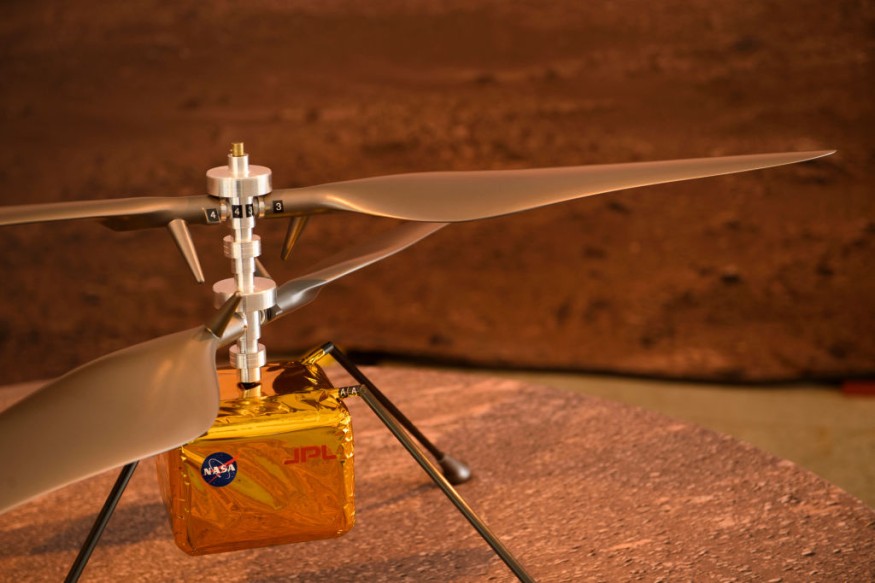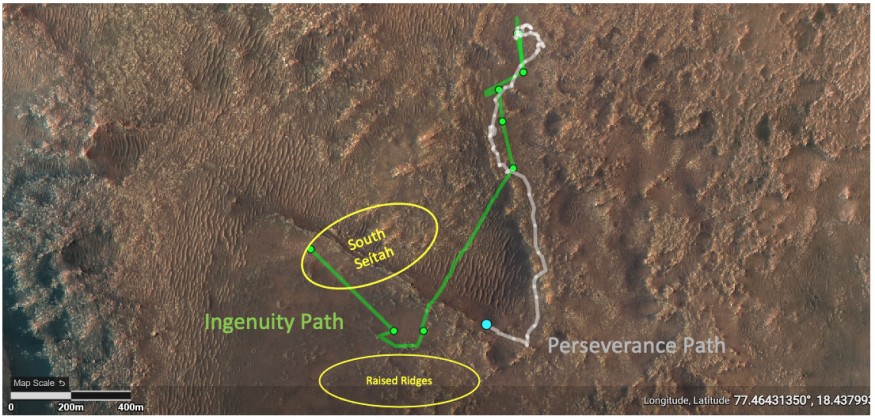Officials stated early Tuesday that NASA's Ingenuity chopper completed its 12th trip on Mars as the aircraft scouts out the Martian landscape for the Perseverance land rover.
NASA's Jet Propulsion Laboratory said on Twitter that the 4-pound autonomous aircraft flew over the South Séítah area of Mars for 169 seconds, covering a total distance of ~1,476 feet (~450 m) roundtrip at the height of 32.8 feet.
A dozen for the books!🚁The #MarsHelicopter’s latest flight took us to the geological wonder that is the “South Séítah” region. It climbed 32.8 ft (10 m) for a total of 169 seconds and flew ~1,476 ft (~450 m) roundtrip to scout the area for @NASAPersevere. https://t.co/cM9xzI8rza pic.twitter.com/SDRVMpOPoo
— NASA JPL (@NASAJPL) August 17, 2021
Jet Propulsion Laboratory, a federal-funded research and development facility run by NASA and the California Institute of Technology in California, said that the chopper conducts aerial scouting.
The images will aid the team behind NASA's Perseverance Rover in determining which boulders, rocky outcrops, and other geologic features "may be worthy of further scrutiny" by the land rover.

Flight 12 a Substantially Risky Mission
Flight 12 was supposed to be identical to Flight 10 in a way that it was supposed to survey a surface feature named 'Raised Ridges.' However, in a blog post before liftoff, members of Ingenuity's crew claimed that it may have "more profound outcomes." The operation carried "substantial risk," the space agency added.
The team leaders said that 10 color photos will be shot.
ALSO READ : NASA's Ingenuity Helicopter Captures Its Mothership, the Perseverance Rover, in New Mars Footage
They noted that the trip would be risky due to the region's varied topography and Ingenuity's navigation system's design for flights over flat ground. Still, the benefits would be worth the risk. The rotorcraft has encountered various technical challenges but has far overcome them all.
Knowing that they can assist the Perseverance team with science preparation by providing unique aerial video is enough incentive for them, they said per CNet.
Ingenuity's next flight, scheduled for this week, will take it to the "geologically intriguing" South Séítah section of Jezero Crater, shown by the top yellow ellipse in the figure below.

The chopper landed on Mars in February while attached to the Perseverance rover's underbelly and took its first median flight on April 20, ascending to a height of roughly 10 feet before returning to the planet's surface.
Ingenuity has spent more than 20 minutes in Martian air since then, traversing almost 1.2 nautical miles.
Digital Trends said that one of the goals of Ingenuity's test flight mission was to determine if its technology might be employed in a more advanced flying aircraft to aid ground rovers.
Ingenuity's flights, on the other hand, have gone so successfully that the team has found itself in the unexpected position of being able to assist the Perseverance team by capturing high-quality images of areas of interest.
Perseverance To Move to Another Location
Meanwhile, the Perseverance rover is on its way to a new site where it will gather the first samples to be returned to Earth. Days after the failed effort to scoop Martian dirt, the SUV-sized rover is on its way to a fresh spot.
NASA blamed the sampling disaster on the exceptionally soft rock. They claimed that it was too soft to produce a core sample and that the tiny, powdery particles stayed in the hole or ended up in the cuttings pile, or both. Engineers bored to a depth of approximately 8 cm, and photos of the borehole appeared to be in fine shape.
The space agency posted in its Twitter account that the rover is currently on its way to several stratified rocks detected from afar a few weeks ago.
I’m headed over toward some layered rocks that I spied from a distance a few weeks ago. Can already see the landscape around me changing. It’ll be interesting to see what clues this next spot holds.
— NASA's Perseverance Mars Rover (@NASAPersevere) August 13, 2021
Track my location: https://t.co/uPsKFhW17J pic.twitter.com/MBk5lROLR6
The sedimentary rock should be considerably better for sample there, according to imaging by the rover and its accompanying chopper, Ingenuity, Louise Jandura, chief engineer for Perseverance's sampling mission, noted earlier.
NASA plans to gather approximately 35 samples, which will be returned to Earth in a decade through future missions.
RELATED ARTICLE : NASA Eyes Making New Mars Science Helicopter; Is It Bigger, Better Than Ingenuity?
Check out more news and information on Space in Science Times.












